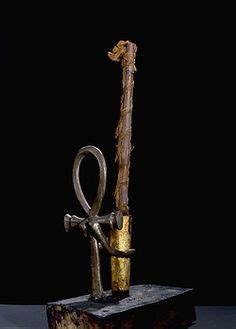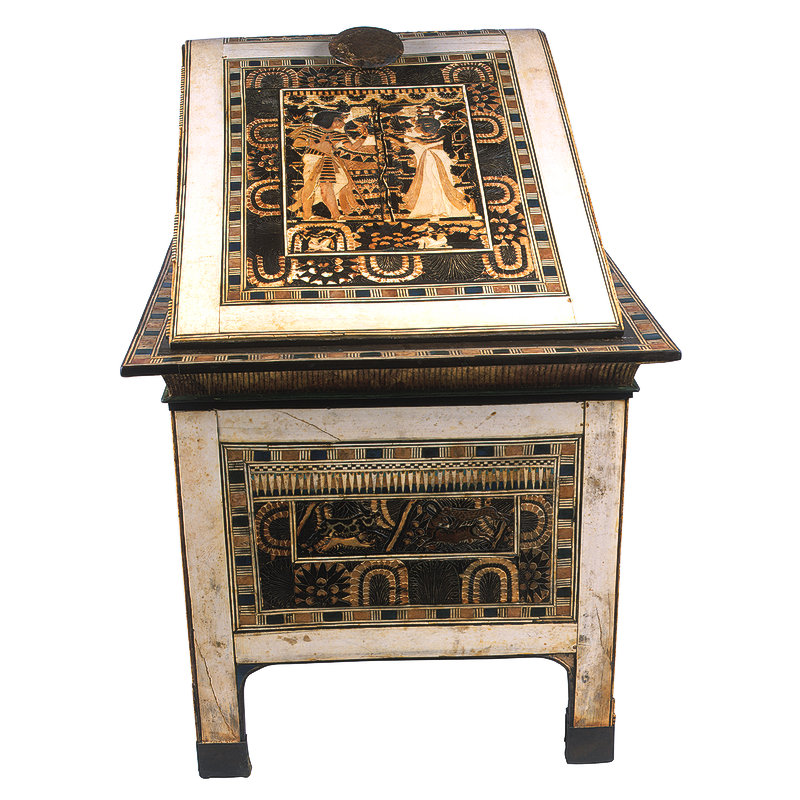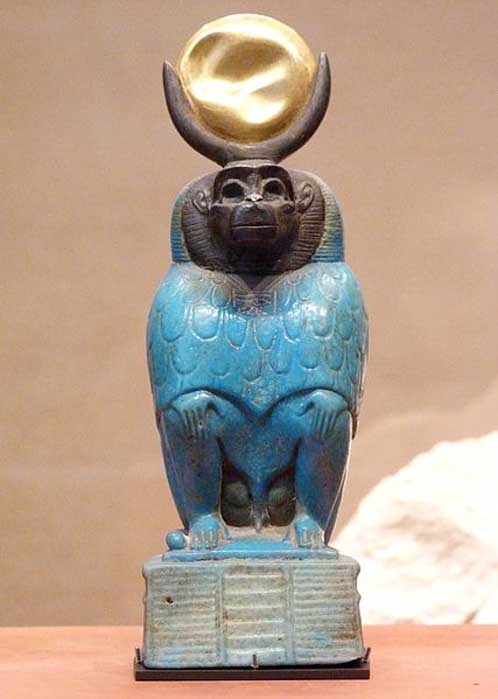
1/ T-92 of Tutankhamun 100 day countdown. Today his lamps & lighting kit. #Egypt #Archaeology #Tutankhamun #Tutankhamen #Toutankhamon #Tutancâmon #Tutanchamun #توتعنخآمون #Tut #Tut100 #Tutankamón #ツタンカーメン #图坦卡蒙 #圖坦卡蒙 #Τουταγχαμών #тутанхамон #투탕카 #תותאנקאמון 

2/ Lots of sun in Egypt, but at night & inside buildings ancient Egyptians relied on oil lamps. Houses had a few small windows in living rooms, other rooms were dark. Also dark in the inner sanctums of temples. This oil lamp on a stand is from tomb of Kha at Deir el-Medina. 

3/ Scene from tomb of Pashedu at Deir el-Medina showing oil lamps in clay cups with double wicks. Left held by Udjat-eye & right by Pashedu. They lift lamps to illuminate Osiris sitting between them. twisted flax wicks coated in animal fat & sitting in oil worked like candles 

4/ Tutankhamun had 4 bronze wick holders shaped like Ankh-sign of life with human arms. They were mounted in wooden blocks support oil lamps. #Egypt #Archaeology #History #Egypte #Egipto #Egito #Ägypten #مصر #Egitto #エジプト #이집트 

6/ two of these held gilded bronze tubes supporting tall wicks called tapers. One of the tapers was still intact. 



7/ But how did Tutankhamun get a fire started to light his lamps? He used this little fire drill set found in the tomb. The short wooden block & hand drill is not the most beautiful object fromb tomb, but is very intersting. It shows signs of use, too. 

8/ Here's how Tutnakhamun's fire drill worked. either with a small bow or by hand, he spun the drill stick with some kindling in the hols of the board until friction lit a spark starting the fire. The drill stick held a small fire stick that could be replaced when needed 



9/ Tutankhamun also had a fancy calcite (Egyptian alabaster) lamp with a clever design. Shaped like a lotus-cup on a stand with openwork designs on the sides. A faint scene is visible on the cup. 

10/ when lamp was lit inside cup, this lovely scene appears showing Tutankhamun sitting & Queen Ankhesenamun standing before him. The cup has an inner lining painted with the scene. Calcite is translucent so the image is visible when lit. 

12/ This is an exquisite work of art and quite fragile. We are fortunate this stunning piece has survived intact. The deep cup would glow when the wick was lit inside it. 

13/ Tomorrow on Tutankhamun countdown, strange ritual objects & model tools for his journey to the Underworld. #Archaeology #Tutankhamun #Tutankhamen #Toutankhamon #Tutanchamun #ツタンカーメン #투탕카 #توتعنخآمون #エジプト #이집트 #Egypt #Egypte #Egipto #Egito #Ägypten #مصر 

Please follow me for Tutankhamun 100 day countdown to anniversary of discovery of his tomb in 1922. Until November 4 

• • •
Missing some Tweet in this thread? You can try to
force a refresh


















